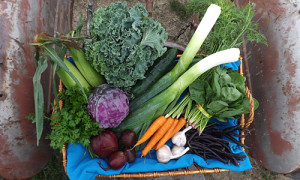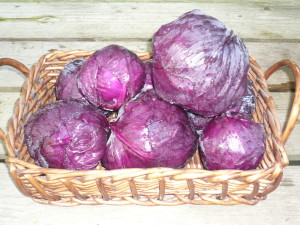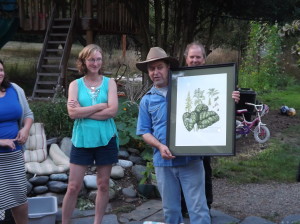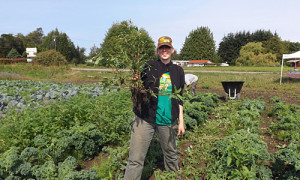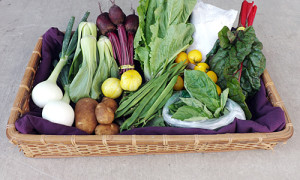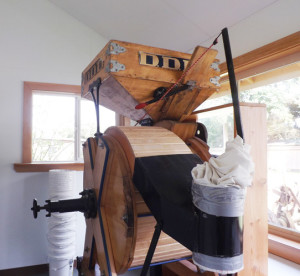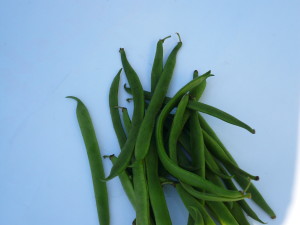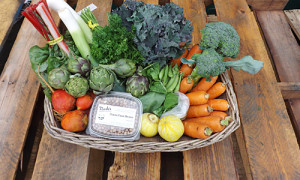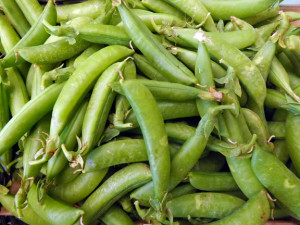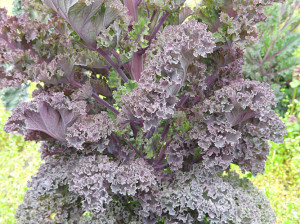Week 8, August 29
Both boxes have: Leeks, garlic, carrots, green kale, cucumber
The Small box also has: Red beets
The Standard box also has: Corn, spinach, red cabbage, curly parsley, purple beans
Nash’s Green Kale
Like the red kale in your box two weeks ago, Nash’s green Kale was selected over many years of classical breeding work on the farm. Nash wanted a winter-hardy kale that had good stature and sweet taste, and this curly green kale certainly fits the bill! It makes great kale chips (see nashsorganicproduce.com, Recipe Blog), and holds its flavor and texture well in soups and stews.
The health benefits are over the top:
- Kale is low in calories (only 33 in a one-cup serving) but brimming with stuff your body requires for health—134% of the RDA for vitamin C, 206% of vitamin A, and 684% of vitamin K. It’s also a good source of calcium, copper, potassium, iron, manganese and phosphorus.
- It has lots of those hard-to-pronounce but vital phytonutrients and antioxidants that help your body fight cancer.
- Its fiber content helps lower blood cholesterol levels. It binds to bile
acids, reducing the risk of heart disease, especially when eaten lightly steamed. Kale also helps combat inflammation and prevents arterial plaque formation. - It’s a great source of alpha-linoeic acid, an omega-3 fatty acid that enhances brain health.
Many of kale’s excellent phytonutrients require some fat to become readily available to the body. Eat kale in combination with olive oil, avocado, cheeses, legumes like kidney or fava beans, or lean meats.
Spicy Kale/Purple Bean Parmesan
Red Cabbage—Hearty and Versatile
Lock in the red color by adding a teaspoon of vinegar to any cooking liquid. Please don’t overcook! It will lose lots of its health benefits, let alone its rich flavor.
Red cabbage can stand up to many other strong flavors:
- Try it sautéed with ginger, garlic, and onions in sesame oil. Garnish with sesame seeds and finely chopped green onion. Add some chili flakes, if you like a bit of a kick.
- It is a perfect partner with apples, raw in a salad, or braised with onions, cinnamon, star anise and bay leaves.
- It goes well with anything pork! Finely slice and cook with pork chops. Add a little rosemary and thyme. Apples would be good here, too, or sauté lightly in bacon grease and serve with crumbled bacon, bleu cheese and raisins.
- Toss ½ red cabbage, thinly sliced, ½ cup chopped curly parsley, 2 shredded carrots, ⅓ cup rice vinegar, 1 Tbsp. honey, 1 tsp. salt and 1 tsp. pepper in a bowl and chill one hour before serving.

